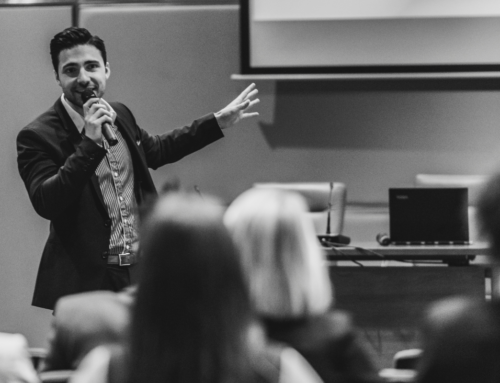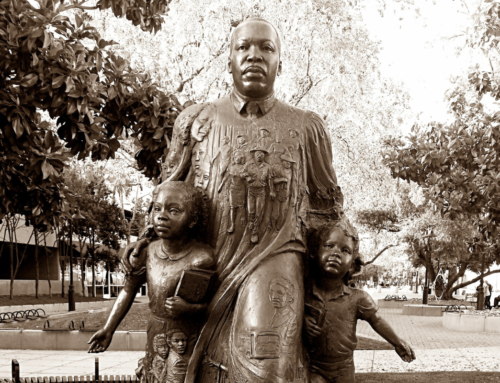You’ve reached that point in creating your speech where you’ve worked with the audience to understand the problem, and you’ve offered a solution. Now, you need to take a couple of steps to seal the deal.
Remember what you’re doing: you’re trying to persuade the audience of something. Now put yourself in the audience’s shoes. It has just been presented with a compelling problem and a solution. Where is it likely to be? Fully or nearly persuaded. It needs just a little more help to push it into the comfort zone.
So now you’re going to spend a few minutes helping them along with a great example of the wonders of your solution. If you’re a consultant, for example, touting the benefits of a new way of managing customer service, it’s time to present a case study of a company that adopted your approach and succeeded magnificently.
Think of this section of the speech like the counterpart to the opening hook. If you used a 3-minute story there showing what happens when customer service goes horribly wrong, then this is your chance to close the circle logically and emotionally by telling a 3-minute story (or case study) where it goes right.
This section doesn’t have to be long, and in fact it shouldn’t be. Three to five minutes is optimal. The point is to give a concrete example of something that shows the benefits of your solution. Audiences aren’t very good at imaging new states, so help them.
If you’re discussing ways to stop global warming, this is the point in the speech where you tell a success story, or draw a picture of a world turning the global warming problem around. What would that look like? How would people feel, and what would the benefits to them be? Use specifics and concrete imagery as much as possible.
After this step, you’ve only got one more to go before you’re done and ready for a celebration at the bar. I’ll talk about how to close a great speech next time.








Nick,
You are right: giving a clear-cut example of how your solution works in real life will seal the deal.
This can be linked back to the WIIFM? (what’s in it for me?) principle. Presenters should always pay attention to and try to highlight what is in it for them: i.e. what positive benefits can they expect from your solution or product. This should always be in your conclusion, if not a central part of your whole presentation.